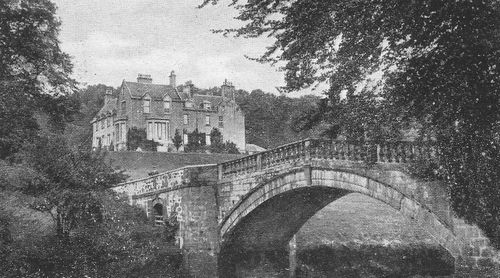Annotation:Balgeny's Bowling Green: Difference between revisions
No edit summary |
No edit summary |
||
| Line 18: | Line 18: | ||
<br> | <br> | ||
18th century London music publisher David Rutherford, apparently unfamiliar with the Scottish name, printed the title as "Ball gownie's Bowling green." | 18th century London music publisher David Rutherford, apparently unfamiliar with the Scottish name, printed the title as "Ball gownie's Bowling green." | ||
<br> | |||
<br> | |||
''Printed sources:'' | ''Printed sources:'' | ||
<br> | <br> | ||
Revision as of 00:17, 17 September 2021
X:1 T:Bargenny’s Bowling Green M:6/8 L:1/8 R:Jig B:John Riddell of Ayr – Collection of Scots Reels, Minuets &c. B:for the Violin (1782, p. 46) Z:AK/Fiddler’s Companion K:Ddor E|(DED D2)c|GEC C2E|(DED D2)f|Te2d ecA| (fgf) Te2d|cAc CDE|(DED D2)f|(e/f/g)e d2:| |:A|(ded d2)a|gec c2e|(ded d2)a|Tg2f gec| (fgf) Te2d|cAc CDE|(DED D2)f|(e/f/g)e d2:| |:A/4B/4c/|dAd cAc|GEC C2c|dAd cAc|dAd cAc| fed cBA|GEC C2D|(DED D2)f|(e/f/g)e d2:| |:^f/g/|a^fd afd|gec c2 (^f/g/)|a^fd afd|a^fd e=fg| fgf e2d|cAc CDE|(DED D2)f|(e/f/g)e d2:|]
BARGENNY'S BOWLING GREEN. AKA - "Balgeney's/Balgener's/Balginie's/Ball gownie's Bowling Green." Scottish, English; Jig (6/8 time). England; London, Northumberland. D Aeolian or Dorian. Standard tuning (fiddle). AABBCCDD (Bremner, Glen, Gow, Riddell): AABB (Vickers). Composition of the melody is credited to fiddler-composer biography:John Riddell (1718-95) of Ayr by Glen, Gow, Seattle and others. Seattle (1987) notes Riddell's (or sometimes, Riddle's) best known tune is "Dumfries House," and the composer was alive at the time the Northumbrian editor William Vickers was compiling his collection. Glen finds the tune earliest in print in the collections of Riddell (1766, p. 46) and Bremner (1757), and it also appears in the [James] Gillespie Manuscript of Perth (1768). Bremner's version is set in 12/8 time.

18th century London music publisher David Rutherford, apparently unfamiliar with the Scottish name, printed the title as "Ball gownie's Bowling green."
Printed sources:
